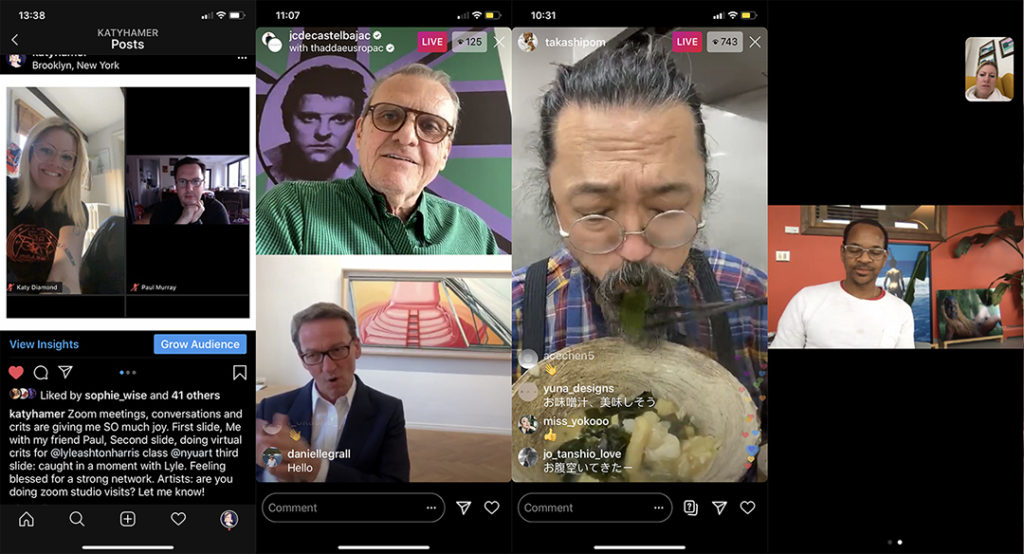
Much of the world has shut down due to the COVID-19 pandemic. We are sheltering in place, wearing masks in public, and social distancing. People who live alone are unable to visit friends, family or even talk to a neighbor without the recommended six feet distance between them. Children, teens and college students alike are being homeschooled while parents juggle navigating classes and Zoom lessons along with their own workload. I’ve heard feedback from friends and family members who have traversed various emotions and days of productivity, to times where they feel stifled, claustrophobic and fearful. Personally, some of my life has remained the same. I have worked from home for years and am used to the fluctuation of employment opportunities that come and go. The biggest change however has been the fact that museums and galleries have had to shutter their doors. For the first time, I can’t just go to Chelsea and visit galleries, or pop into the New Museum. This is a huge disruption that I could have never foreseen. Deemed non-essential, galleries and museums, will probably be in the last block of businesses set to open. At the rate we are going, I wonder, will that be July or perhaps August?
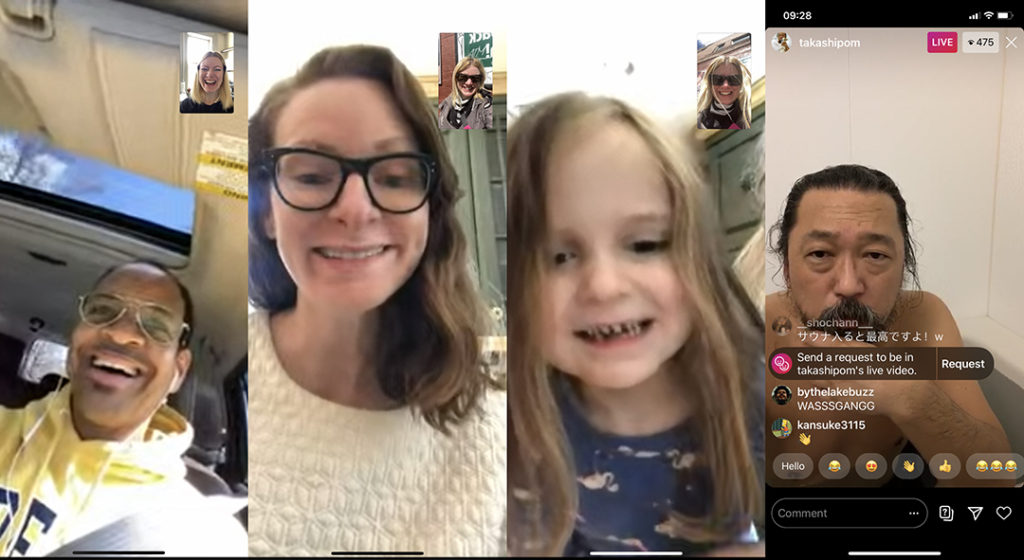
To compliment closed doors, the art world has clamored together to start making digitally accessible content and they’ve done it quickly. By utilizing Zoom and Instagram Live, artists, gallerists, museum directors and critics are all engaging in dialogues that are mostly free and easily accessible. While not in real life, the talks are incredibly valuable and due to the convenience of signing in to Instagram and joining a talk (the platform alerts users to live content of those they are following) it’s easier than ever to engage with the art community. This has been the case for me. My mind and gaze seek artful and intelligent content. For example, discovering a portrait made through FaceTime of Houston-based curator Bill Arning by Scottish Highlands-based artist Sandro Kopp on Instagram, I sought out speaking to Kopp, having my own portrait done and writing about the experience. The insistence of using Zoom for online classes and co-teaching with Lyle Ashton Harris, also lead to content creation for me, whereas I wrote about NYU students and their individual and collective experiences while in quarantine. FaceTime with Harris, who full-disclosure is also one of my dearest friends, has been a life saver and seeing people I love through screens in real-time, is something I am not taking for granted emotionally and in fact, is what lead me to write this today! We cannot allow ourselves to isolate and collectively are fortunate that this pandemic has happened during a time where technology facilitates, albeit virtual, relationships, through eye contact, smiles, tears and gestures of the body.
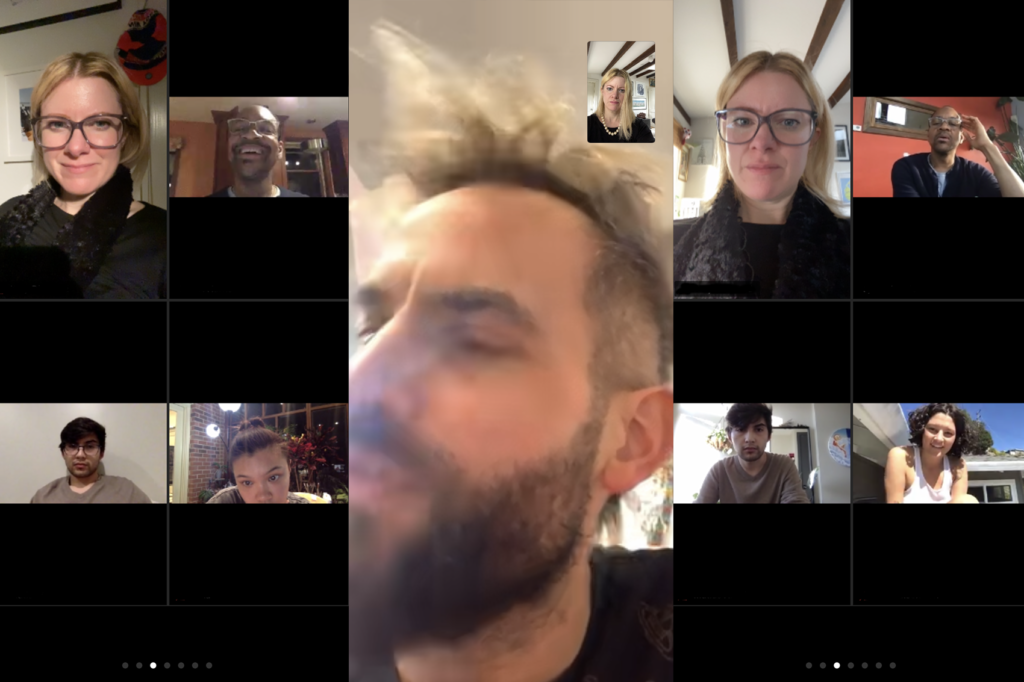
What has it meant for people to go back to basics? Even in a new world, very different from that of the Great Depression, our technological advances have made the concept of isolation less formidable, and quarantine, a practice of physical distance. Several of my friends have left New York either temporarily or permanently, a prompt actualized due to COVID-19. Across the United States, clothing boutiques, malls, restaurants, doctors offices, nail and hair salons, dry cleaners, and churches are all closed. One of the ways that life is reopening, will be from the middle of the country, outward. The wave has started in the midwest and will unfold towards the coastlines. Cars as a means of transportation will lead the way and public transportation and cities that rely heavily on these means of getting around, will follow. FaceTime, Skype, Zoom, Instagram and Facebook live, are the threads of visual communication that are constellations of life, joining one satellite to another.
I’m trying to look at the world with the widest angle. Klaus Biesenbach to Virgil Abeloh via Instagram Live.
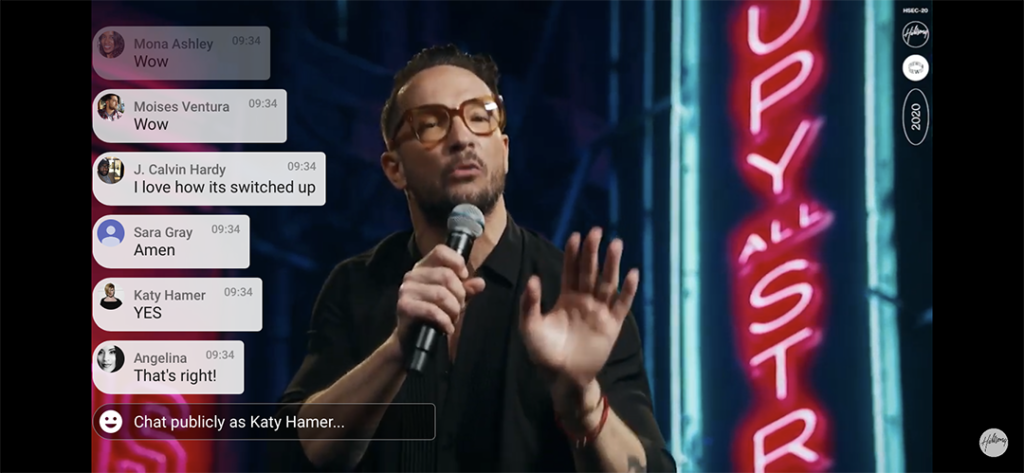
Every Sunday, I tune into both Hillsong NYC and Elevation Church for back to back spiritual inspiration and teaching. Elevation Church, pastored by Steven Furtick, is based on of North Carolina and has always had Youtube and brick-and-mortor based ministry. Unlike the restricted lockdown of New York City, Raleigh, where they film, has fostered an experience allowing the band to still play live and the preacher to be present at the venue with select staff. Contrarily, Hillsong NYC has taken a different route due to not being able to congregate at all. Pastor Carl Lentz uses prerecorded sermons, broadcasting them over Youtube with a live chat component, while Elevation has remained a live stream. They are different experiences but deliver similar messages in brief: I can’t, God can. The sermons have put emphasis on the ‘new normal’ and a life post sheltering in place, as well as mental health and stability in a period of disruption. Lentz has done a three-part series called “Getting Your Mind Right” and Furtick has tapped into, “Focus On The Fruit,” “A Lesson In Letting Go,” and “Looking Forward To Normal.” In the most honest admission I can gather, these sermons from both churches are life saving. They offer cues on how to live fruitfully, focus on the positive, recognition that “normal” might not always be better, and that “How we think determines how we feel. How we feel determines what we do. What we do becomes who we are,” stated Lentz in his sermon broadcast May 10. Starting with Hillsong NYC at 9AM, and then bumping over to Elevation at 10AM, this heavily charged spiritual journey, including active participation the live chats, carries me until about 11:30 AM and I wouldn’t have it any other way.
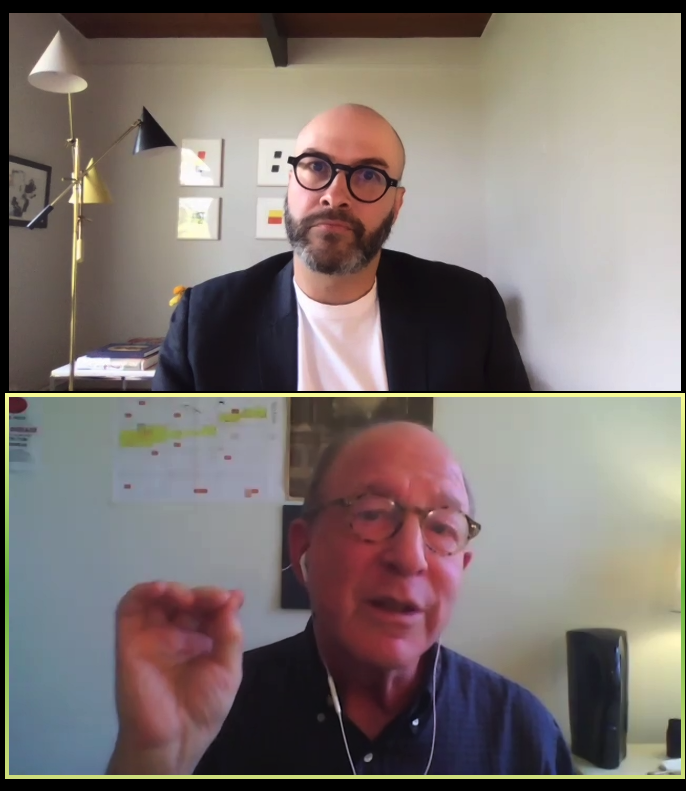
Beyond church, FaceTime and endless Instagram scrolling, I have found solace in Instagram live and Zoom interviews. These are invaluable. Artist Takashi Murakami, who happens to be one of my all-time favorite interview subjects, has been doing everything from bathing, to cooking on Instagram live. He switches between speaking to followers in Japanese and English, and the content and insider view is incredible. As in-person interactions are limited, it’s as if people have been less afraid to let others into their homes, artist’s studios and in some cases, even their bathrooms.
Recently art critic Jerry Saltz was in conversation with editor-in-chief of Artnet, Andrew Goldstein on Zoom. They spoke on the occasion of Saltz’s book “How To Be An Artist” recently published by Riverhead Books, 2020, and included in several best seller lists. Already an active presence on Instagram, Saltz was a perfectly unfiltered subject on Zoom, at one point flashing the virtual audience a peek of the verdant landscape outside his window. Goldstein, also sheltering outside of New York City, had a calm presence and asked direct questions while also allowing Saltz to wax-poetic on his life and thoughts on COVID-19, art, and politics. It was such a gift to be watching them while in Brooklyn, not having to commute or take the subway. The Zoom platform is so great because it gives users the option to record content for archival or sharing purposes, invite viewers into the discussion -either through video and audio or text chat- or gives the option for those present to not be seen and just watch the provided content. Registering for these types of virtual events has changed the concept of being alone, in a time of closures and distance, life has the ability to open up, through technology.
Video conversations bring the world inside. My comfort, the faces of those I know and admire, a warm blanket, are a welcomed intervention in my sphere during this time via iPhone and computer screen.
____________________________________________________________________________
Katy Diamond Hamer is an art writer with a focus on contemporary art and culture. Writing reviews, profiles, interviews and previews, she started the online platform Eyes Towards the Dove in 2007 and was first published in print in 2011 with Flash Art International. Hamer had a column with Flash Art from 2011-2016. Interview highlights include Robert Storr, Helmut Lang, Courtney Love, and Rebecca Horn. Taking a cue from art writers such as Jerry Saltz and movements such as Arte Povera, Hamer believes that the language used to describe contemporary art should be both accessible to a large audience as well as informed regarding art historical references. Having grown up in New York, she has been visiting art museums and galleries since the age of 16 and cannot imagine a world without art, or the written words used to allow others to also experience a particular level of engagement.
